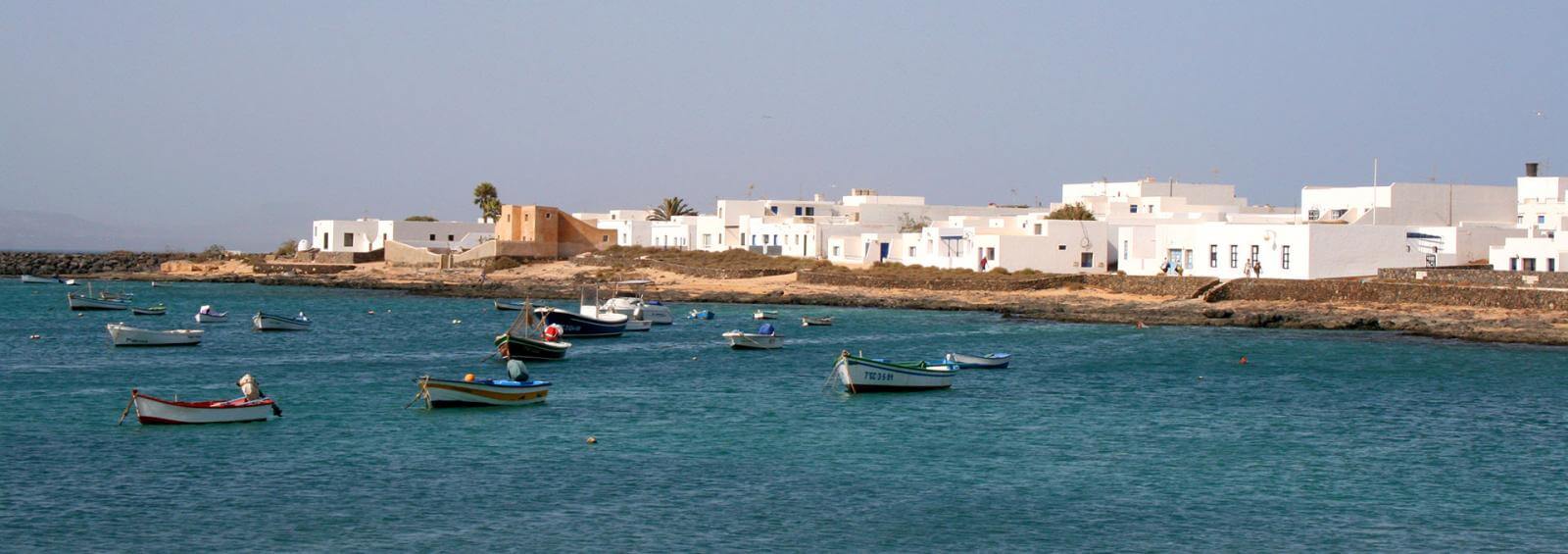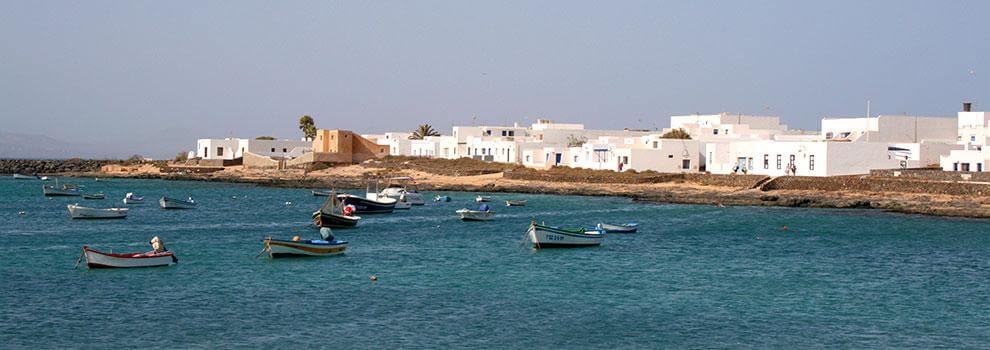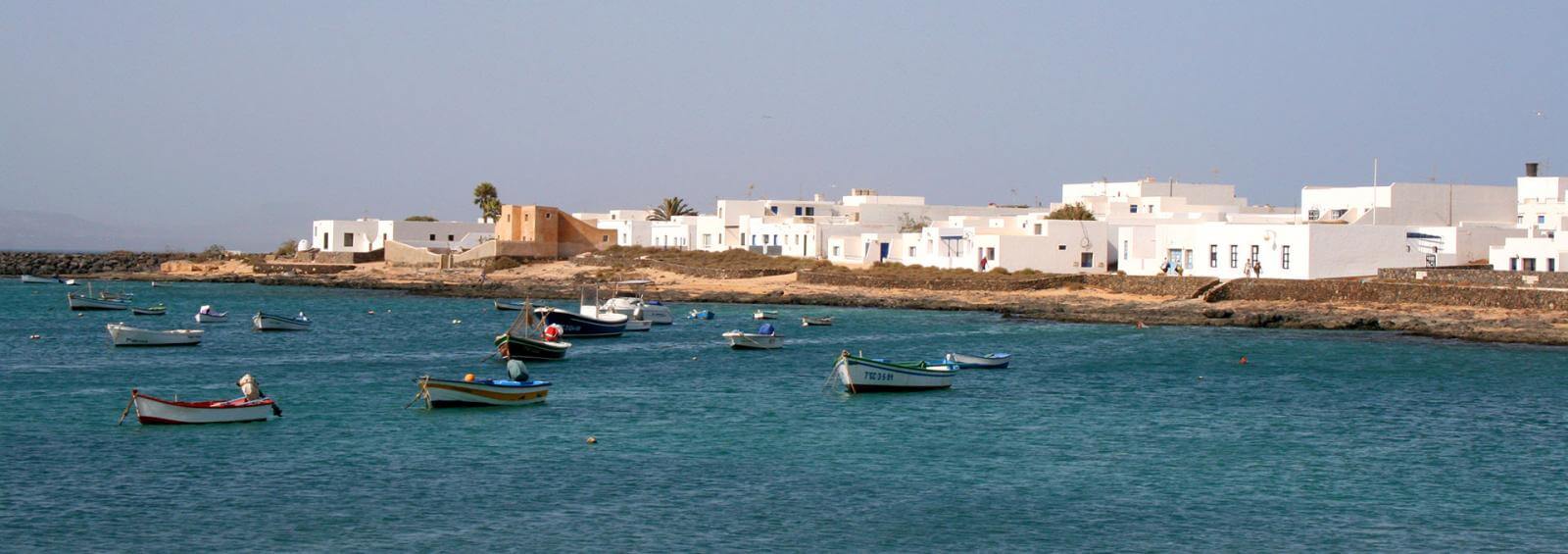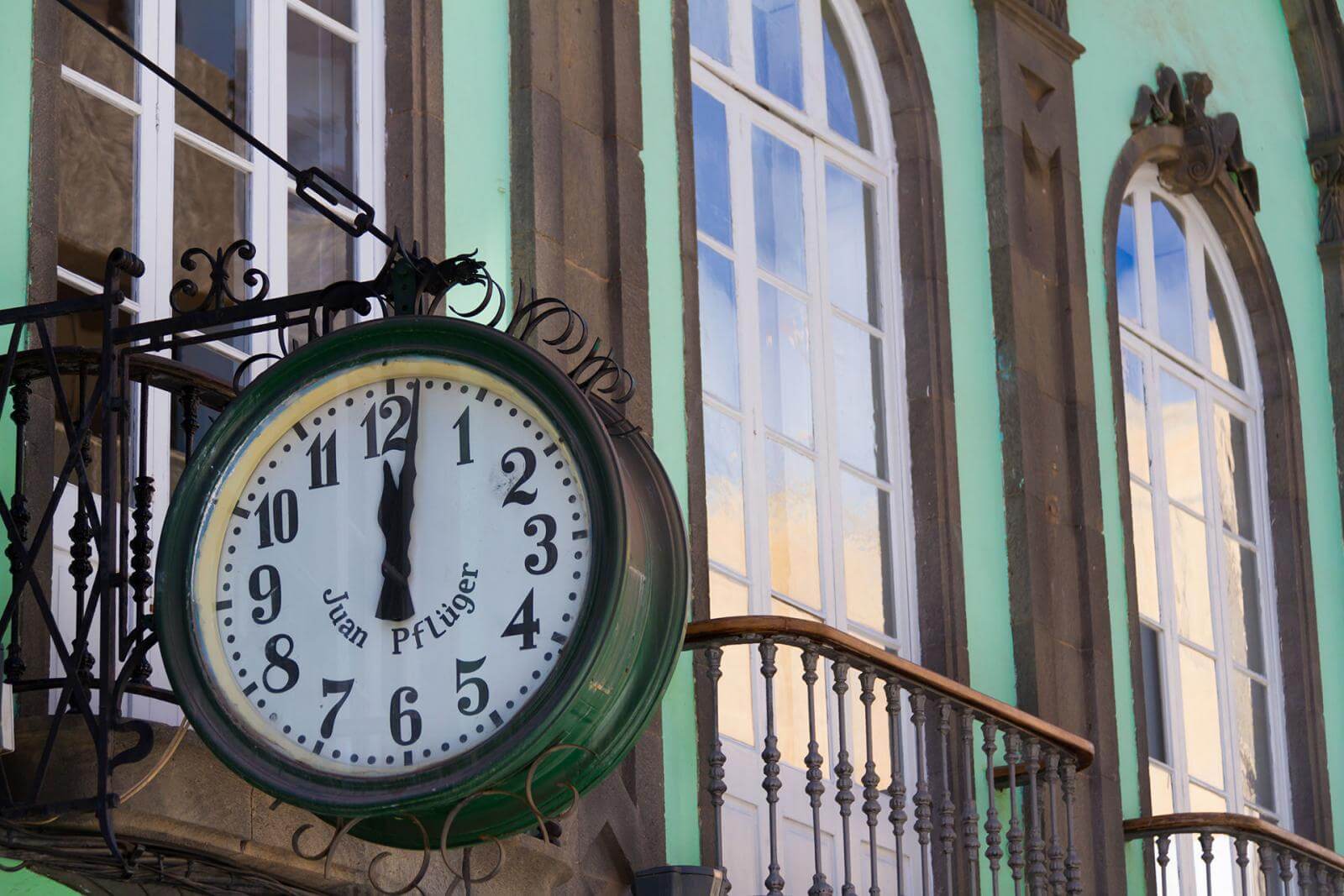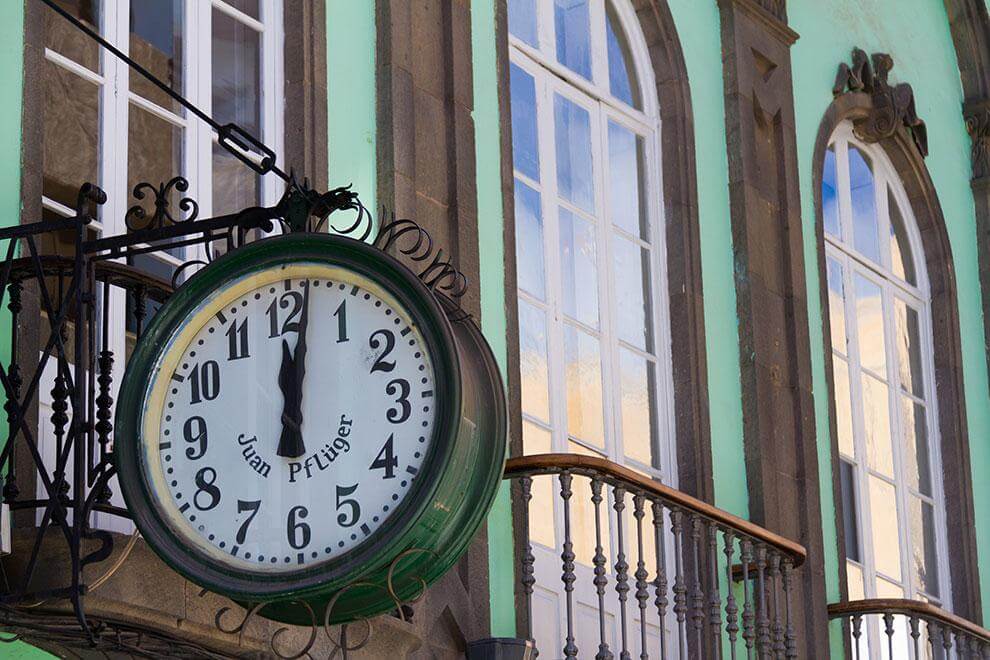In the shadow of Mount Teide, life moves slowly in what has become known as the Florence of the Canary Island.
La Orotava in Tenerife is the Florence of the Canary Islands. The town’s central district, gardens and museums are rich with history. It is when you walk through the cobbled streets of Villa Arriba and Villa Abajo with ancient dragon trees providing shade and old mills and hand-washing laundry basins busy with people that you realise there is no reason to rush. La Orotava has always existed alongside an enormous volcano, Mount Teide, and that perhaps is why the local people are so good about putting things in context. Living well is better than living fast.
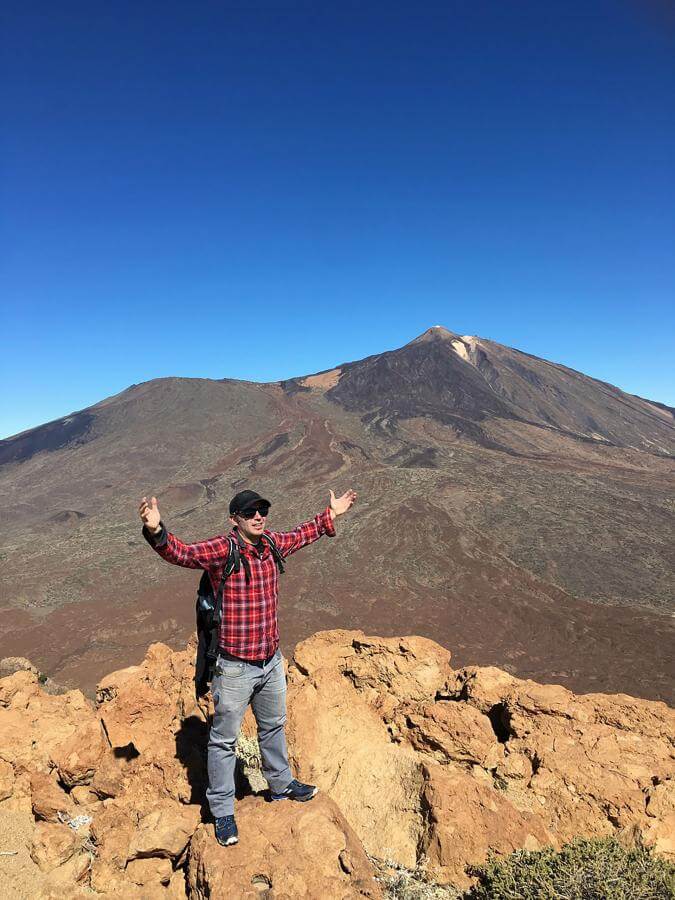
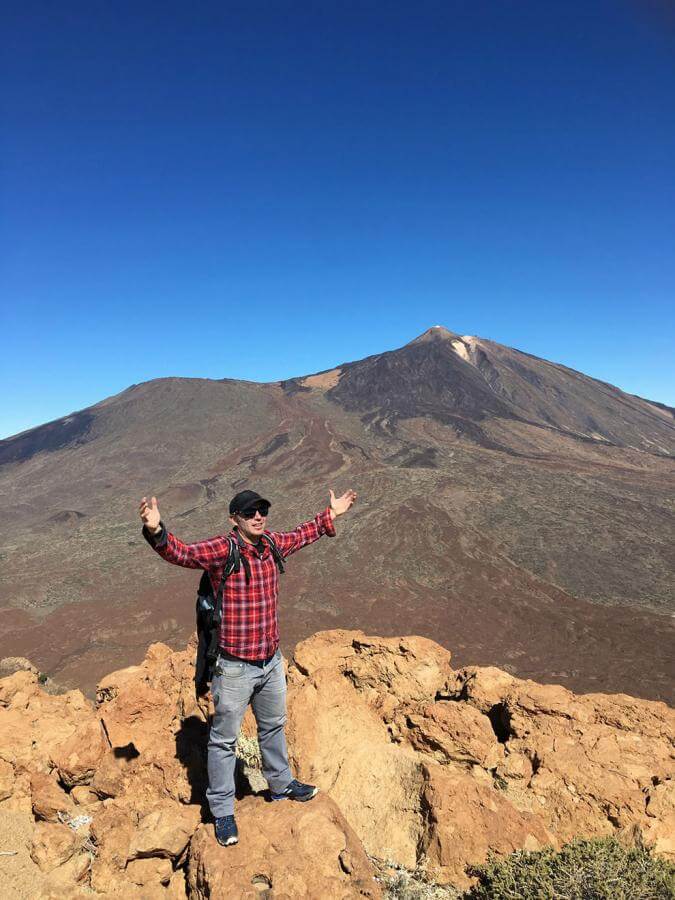
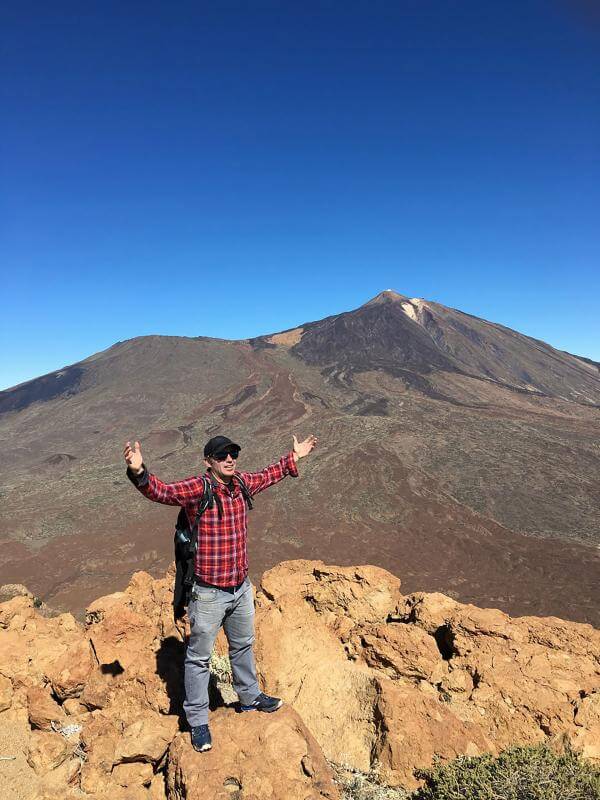
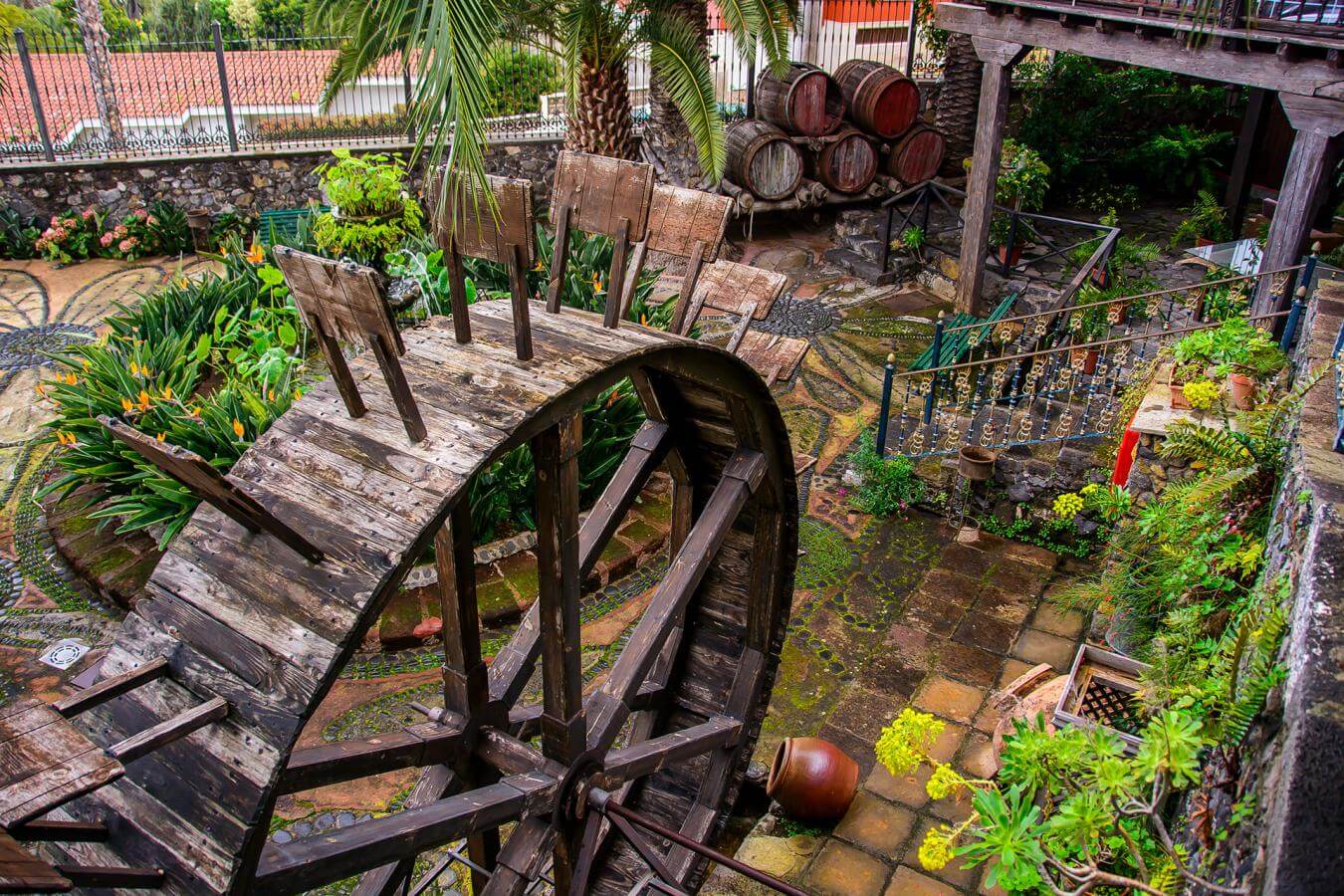
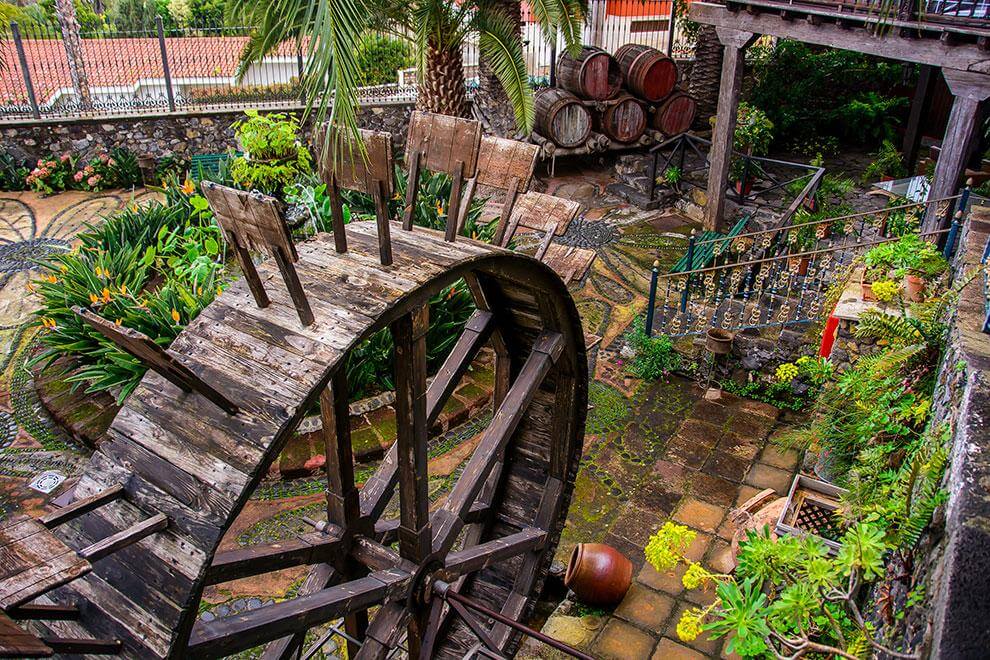
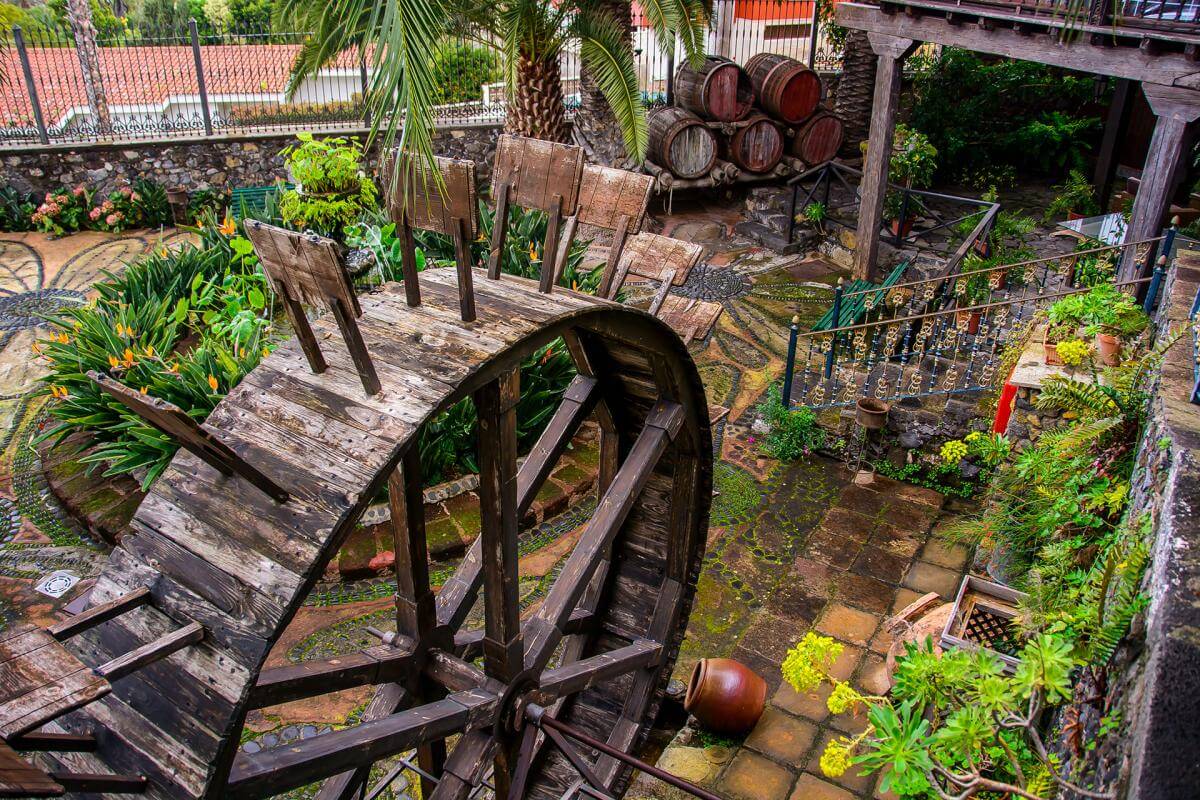
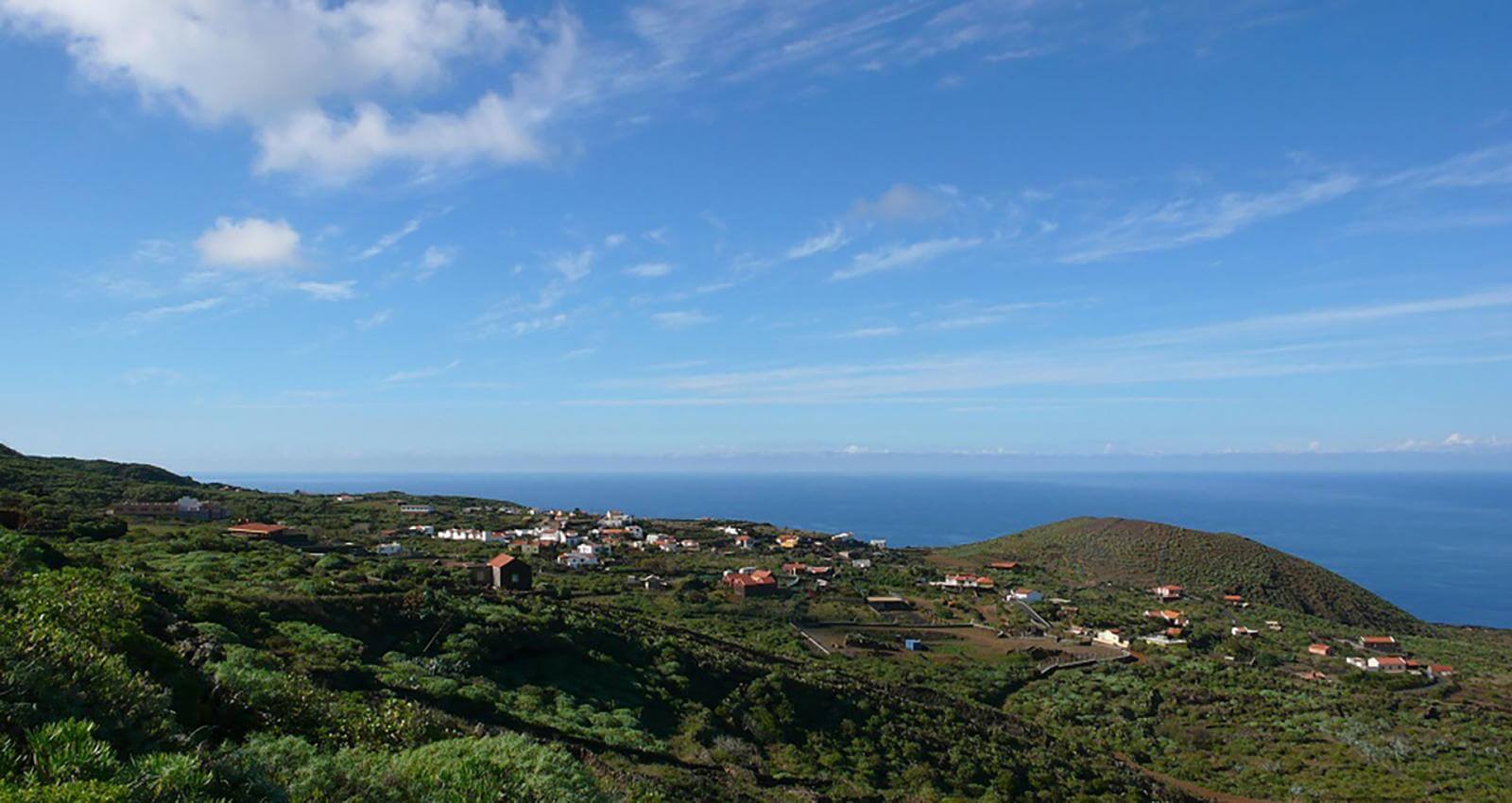
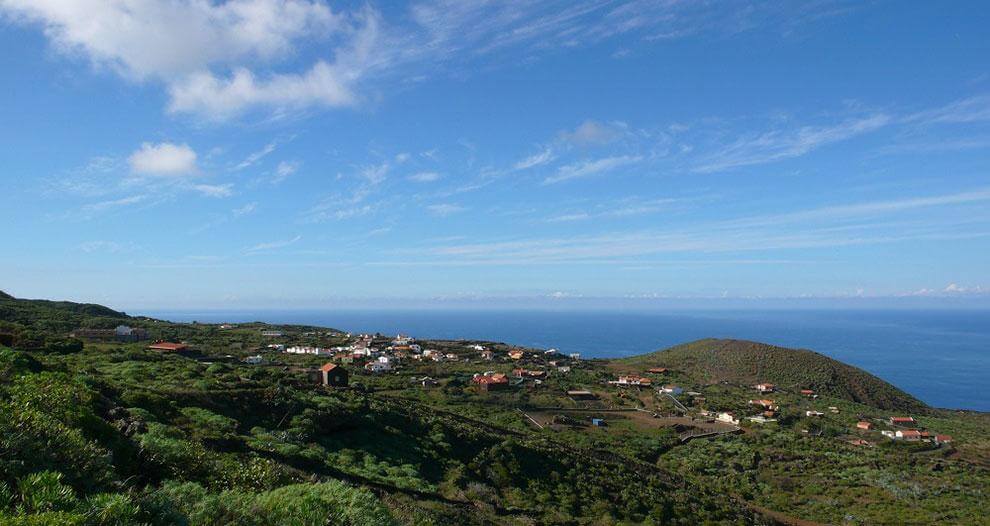
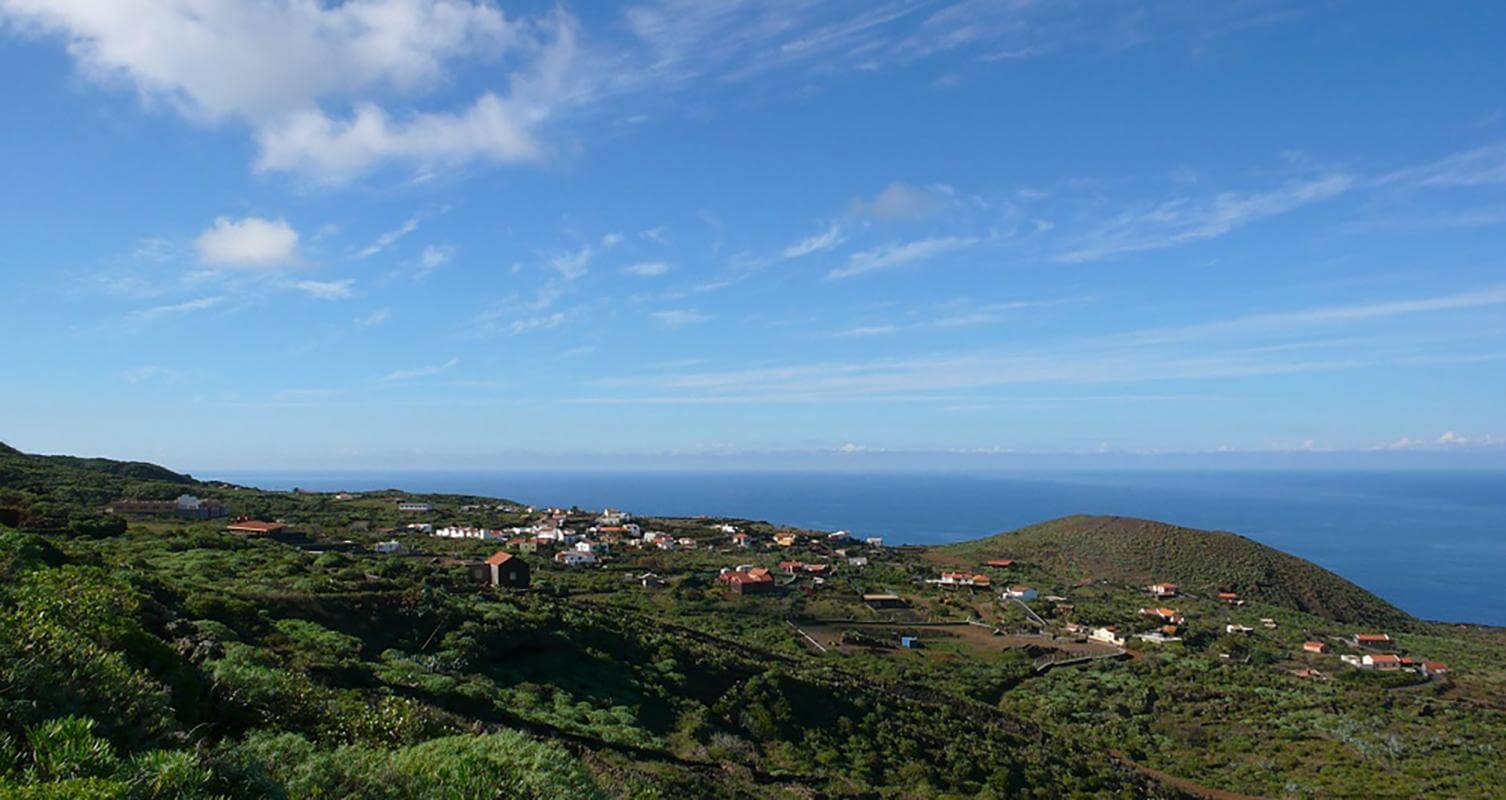
Recently, La Orotava has been granted the Cittaslow International certificate offered by the Cittaslow Municipal Association for Quality of Life, which is chaired by Joan Loureiro. By linking with this movement La Orotava joins a select group of towns and cities around the world who have made steps towards a sustainable form of tourism which protects local landscapes and cultural and social wealth.
“People here connect with one another. They worry together. They share meals and tell each other about how their days have been. Nobody will take me away from here,” says Osman, an Egyptian painter with Canadian nationality who settled in La Orotava more than twenty years ago.
The city that embraces others
Osman lives in front of the most famous house in Villa de La Orotava: La Casa de los Balcones. From this privileged viewpoint he paints his neighbours. His work allows for a deeper understanding of the chores that go into day-to-day life. He examines "the spiritual halo that people, streets, and buildings give off at dusk, especially after the rain, when the light is different," he says. His work searches for an ideal of life. It draws in the stunning local landscapes and serene movements of the local people. “The place you live in embraces you. It is never a question of imprisonment,” he says from his work table which is located on the mezzanine floor of his building. The room is full of brushes and watercolour mixes and is bathed in fabulous light from the street.
At the entrance to Victoria Gardens, Juanjo Martín is waiting. On one of the entry walls is a sign with a large snail on it. This is one of the markers dotted around La Orotava given to the local authority by the International Network for Quality of Life. Martín is fascinated by the stars in the sky. He is a businessman with a longstanding affection for space which led him to found his astrotourism company, Discover Experience. After holdiong forth on space and the universe, Martín embarks on a story of a mausoleum which crowns the pyramid-shaped terraces of the garden we are strolling through. “According to legend a freemason wanted to bury his son there,” he says pointing to a tomb. Freemasons have a long tradition in the local área Martín clarifies.
After this Martín elaborates on the local tradition of Corpus Christi carpets which has been declared a Site of Cultural Interest and a Festival of National Tourist Interest. Every year, at the end of June, the streets that surround the church of Nuestra Señora de la Concepción are decorated by families “who have been assigned spots over the generations. Neighbours work together on the project over many days. The decorating is done all together. It’s very beautiful,” Martín says.
Besides its pretty gardens and festivals, La Orotava is also known for its mills. Manuel Hernández Cabrera, affectionately known as Lolo, says that his mill, El Molino La Maquina, has been in operation since 1638. In the past there were as many as fifteen mills, but today there are only two. Cabrera confesses to being “in love” with his craft although he recognises that the work of an artisan isn’t easy. “Apart from the distribution,” he says. “I do everything: separate, grind and package.” Cabrera was born locally. “It´s all for the love of my daughter,” he says. “I make gofio energy bars kneaded with honey, almonds, raisins, cinnamon and lemon which are popular amongst hikers.”
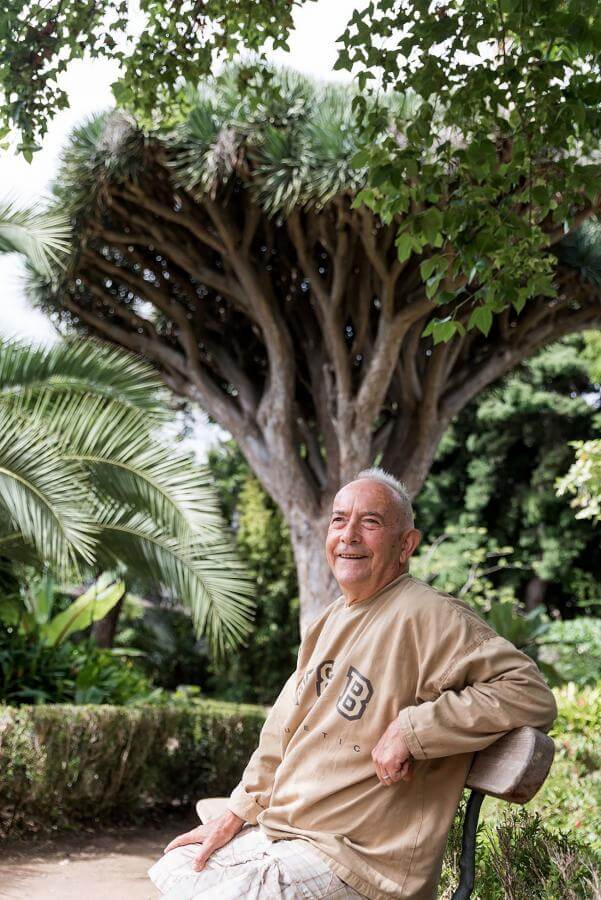
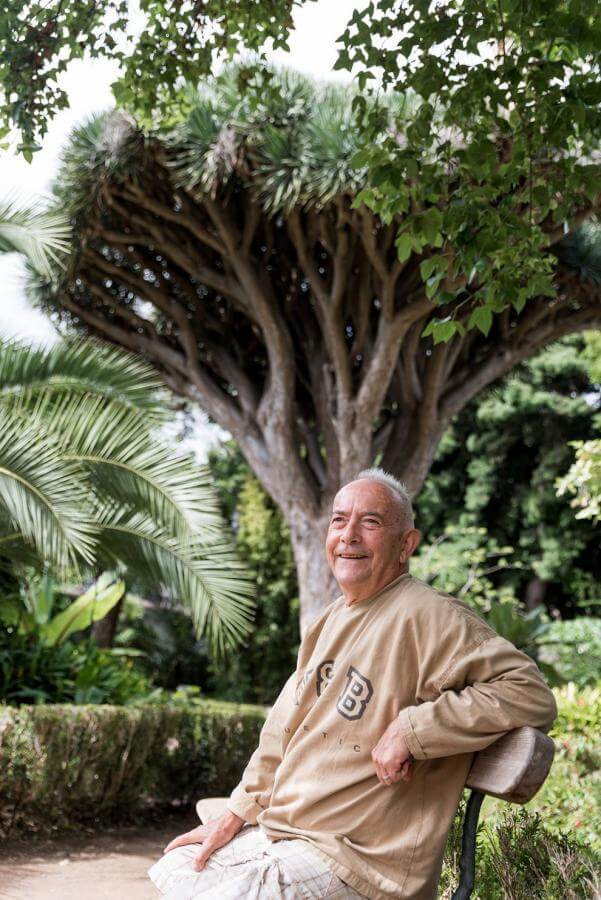
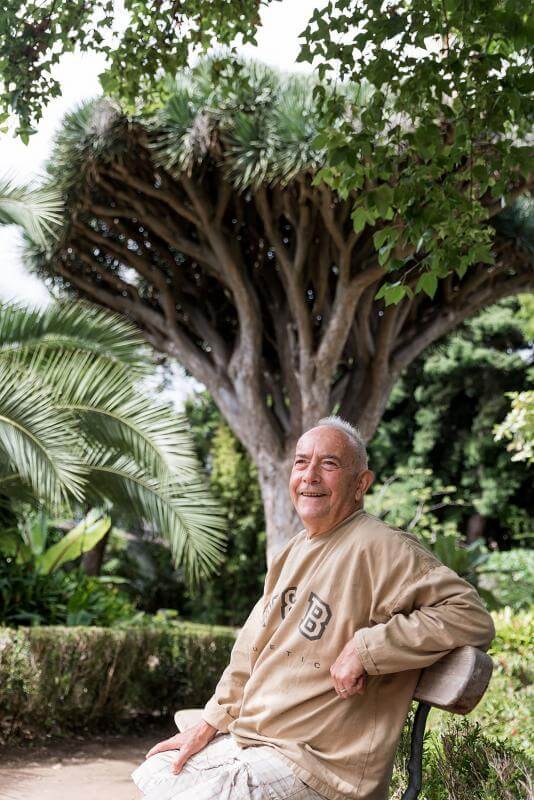
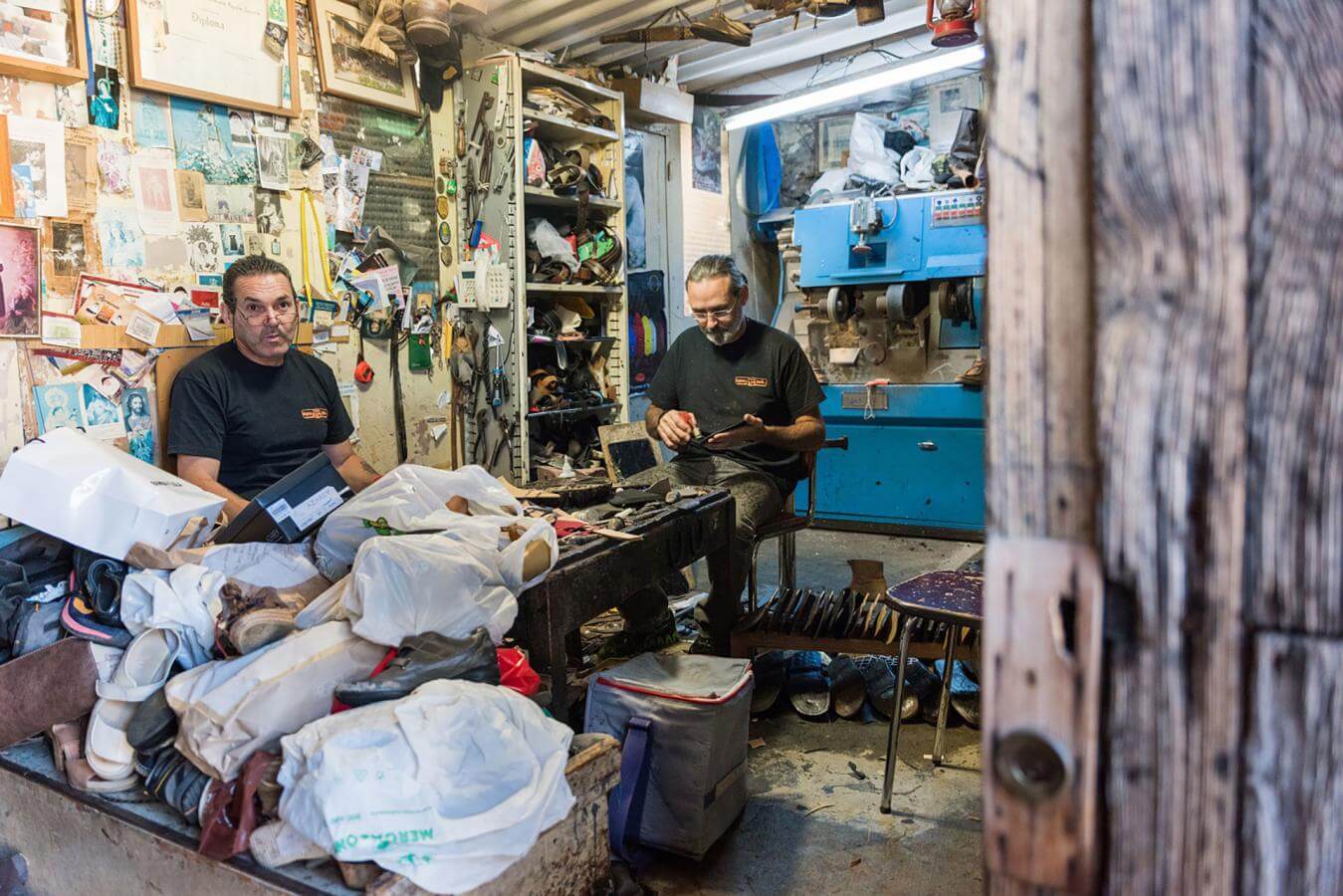
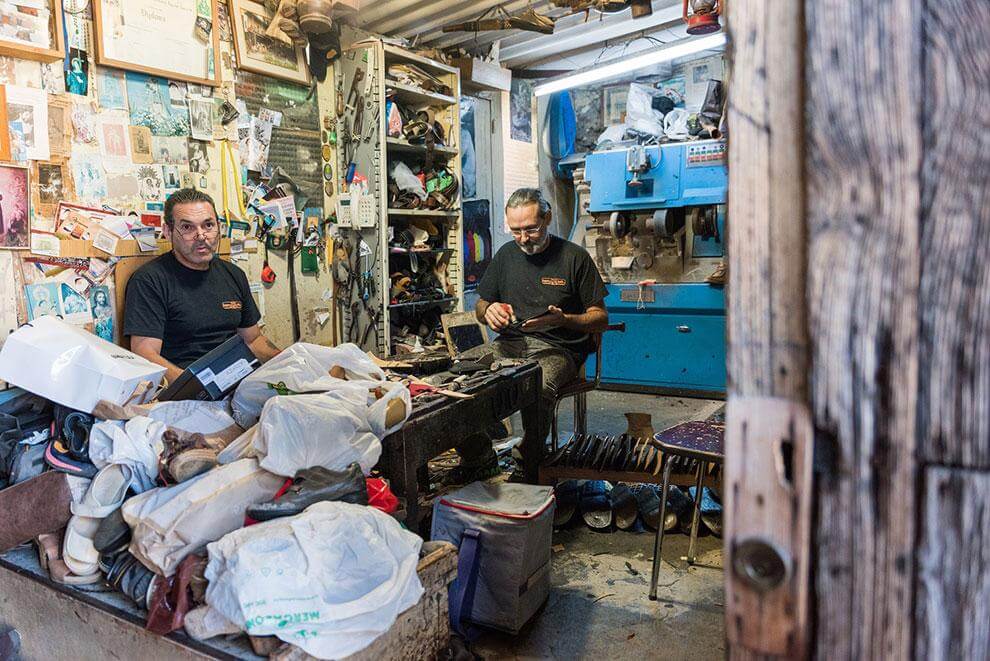
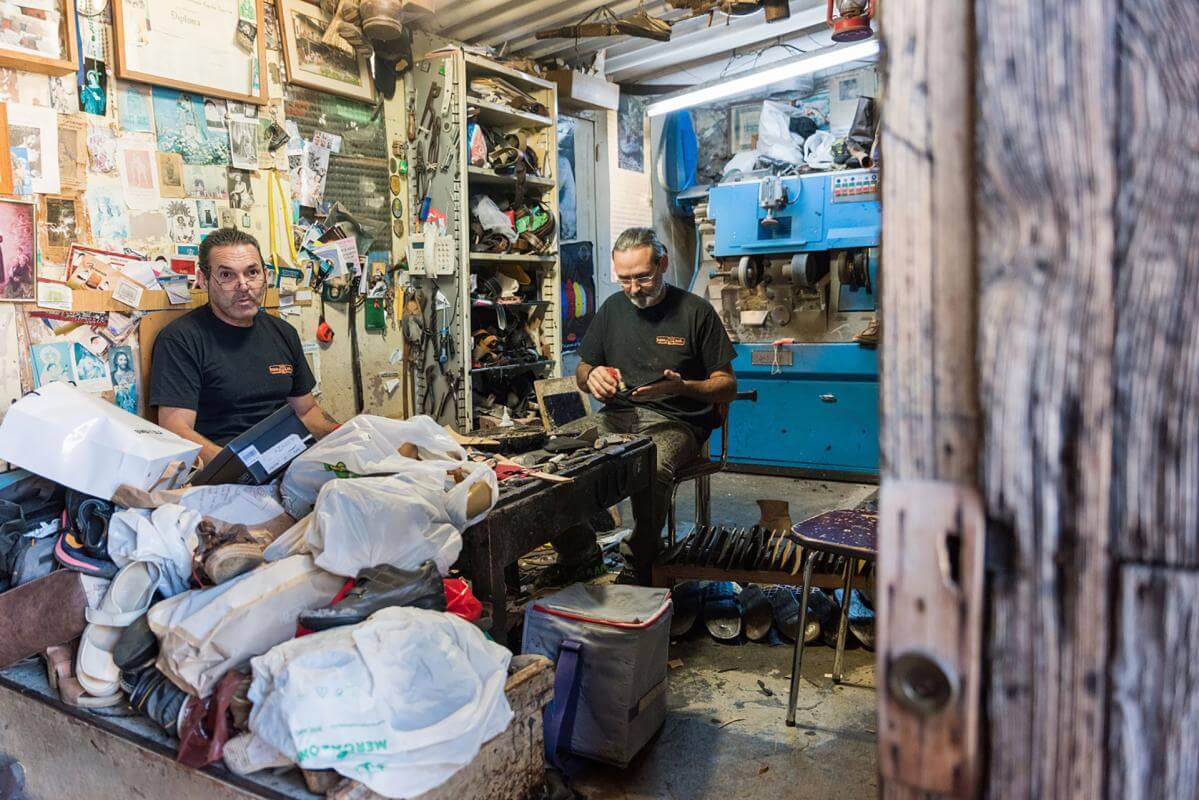
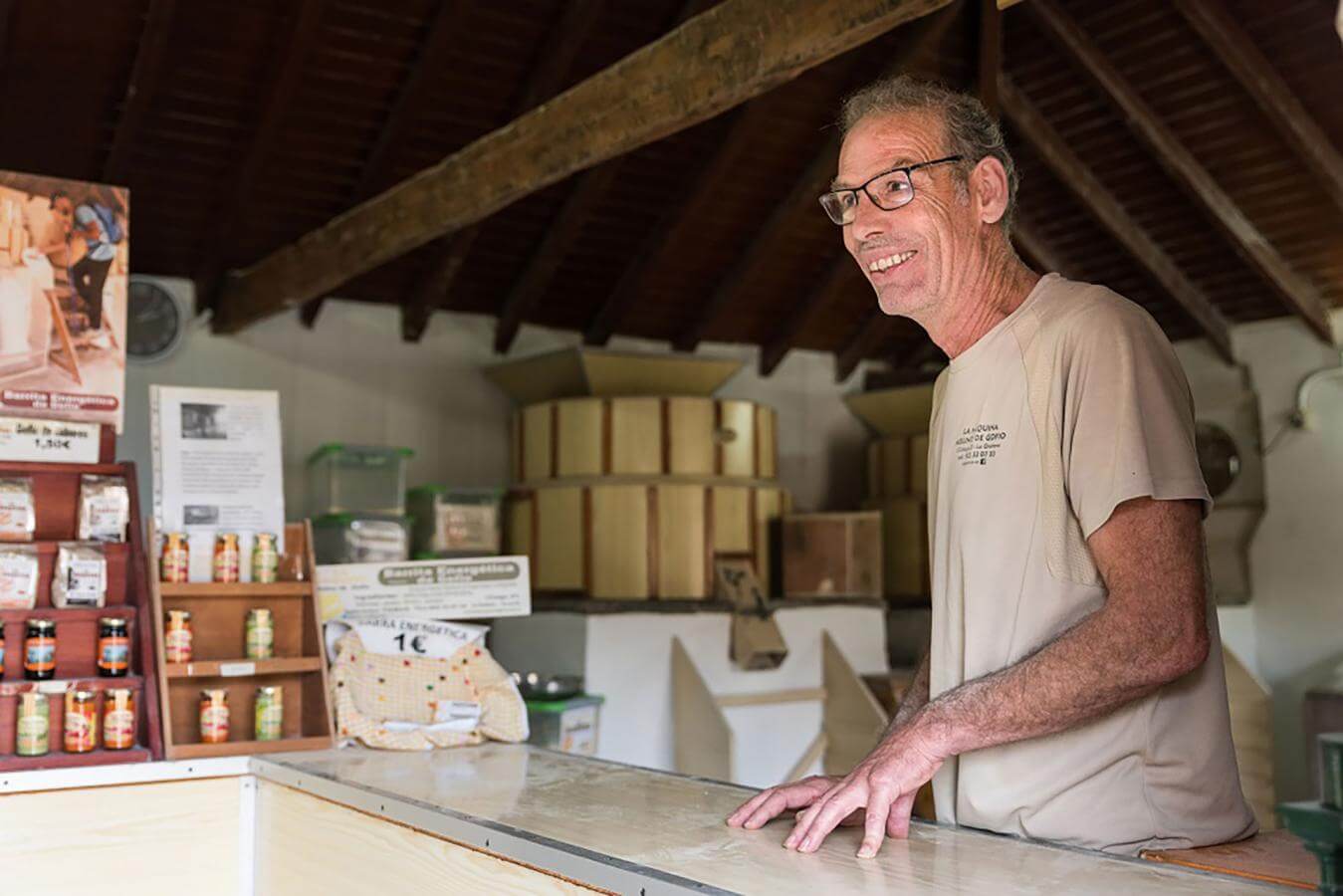
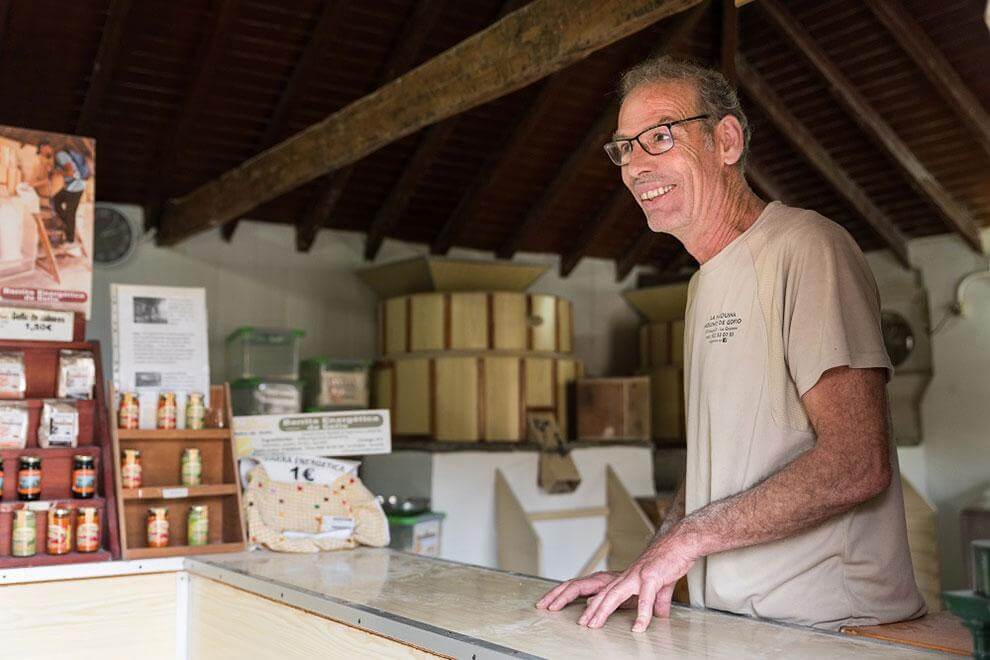
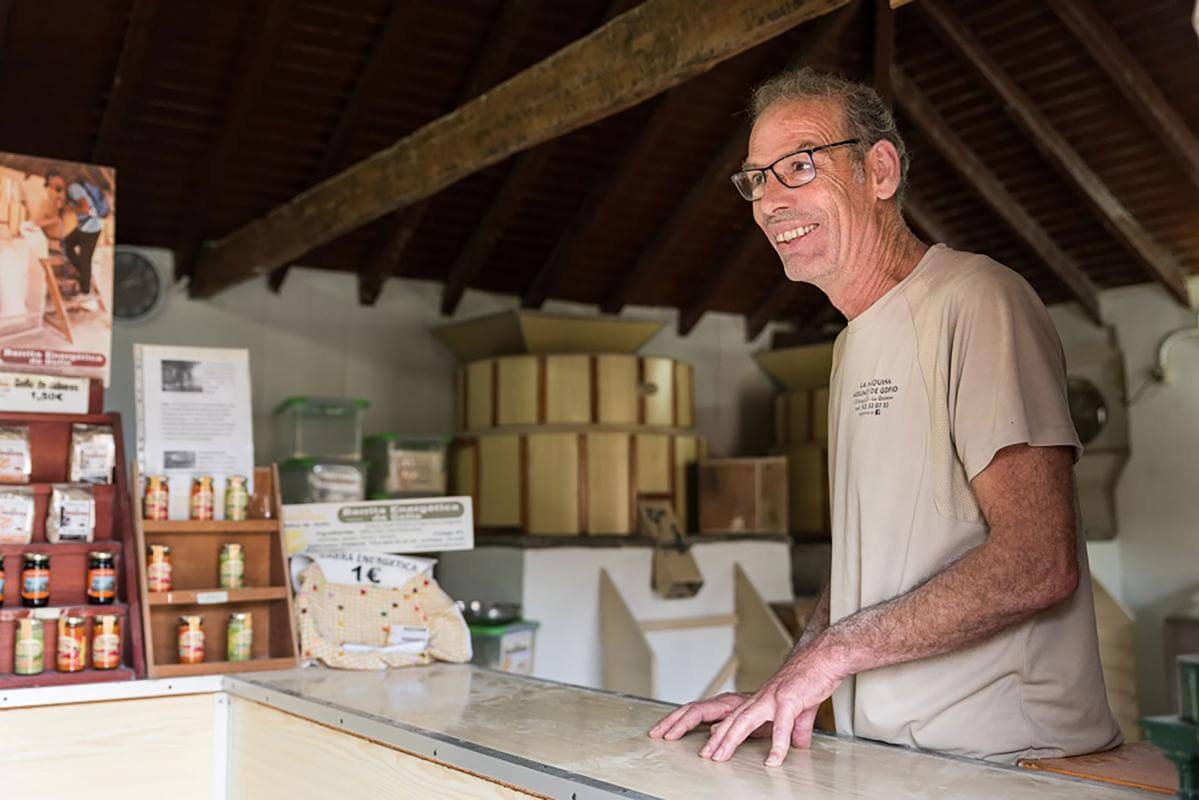
Sustainability
Pedro and Tomás Chávez, shoemakers with a clientele from all over the world, learnt their trade from their father. In front of the Plaza de San Francisco, their artisan work is undertaken in a small room of only twelve square metres. There is not one inch of space with more than 1000 shoes stacked up on shelves. Lanterns, hammers, key chains, hats and a polishing machine are also strewn around. Pedro points to four sewing machines on the floor. “They’re old, but they still work if we want to use them. We keep them because we like them,” he says. The two brothers sit on iron chairs at a table overflowing with work from the latest orders. They tap their shoes rhythmically as they speak. The air is scented with the smell of leather and glue. Over the afternoon the rapport the shoemakers have with their customers is noticeable as is their ironic humour. “You’ll sort my shoes out properly, won’t you Pedro?” says one customer. “Sure. But I won’t sort them out so well that you won’t have to come back again soon,” Pedro replies. There is laughter and mischievous grins all round.
“Falling in love with a place is about personal history, about the bag of experiences we carry with us. That is why our cultural walks are about more than just tourism. We try and awaken memories and link the personal history of visitors with our local area,” says Belén López González. González organises guided routes through the centre of La Orotava. Her trips are part of Canaria en Ruta, a Culturamanía brand which was created in La Orotava fifteen years ago. González specialises in cultural tourism and has been a pioneer in the development of walking trips which allow participants to learn about cultural heritage. She says that it is only after “attachment and emotional bonding that people can decide to protect important landmarks.” Originally from Los Realejos, González explains that she likes the local people of La Orotava because “they surprise you with their customs, their attachment to the land and their beauty as they go about everyday life in nooks and crannies of the town.”
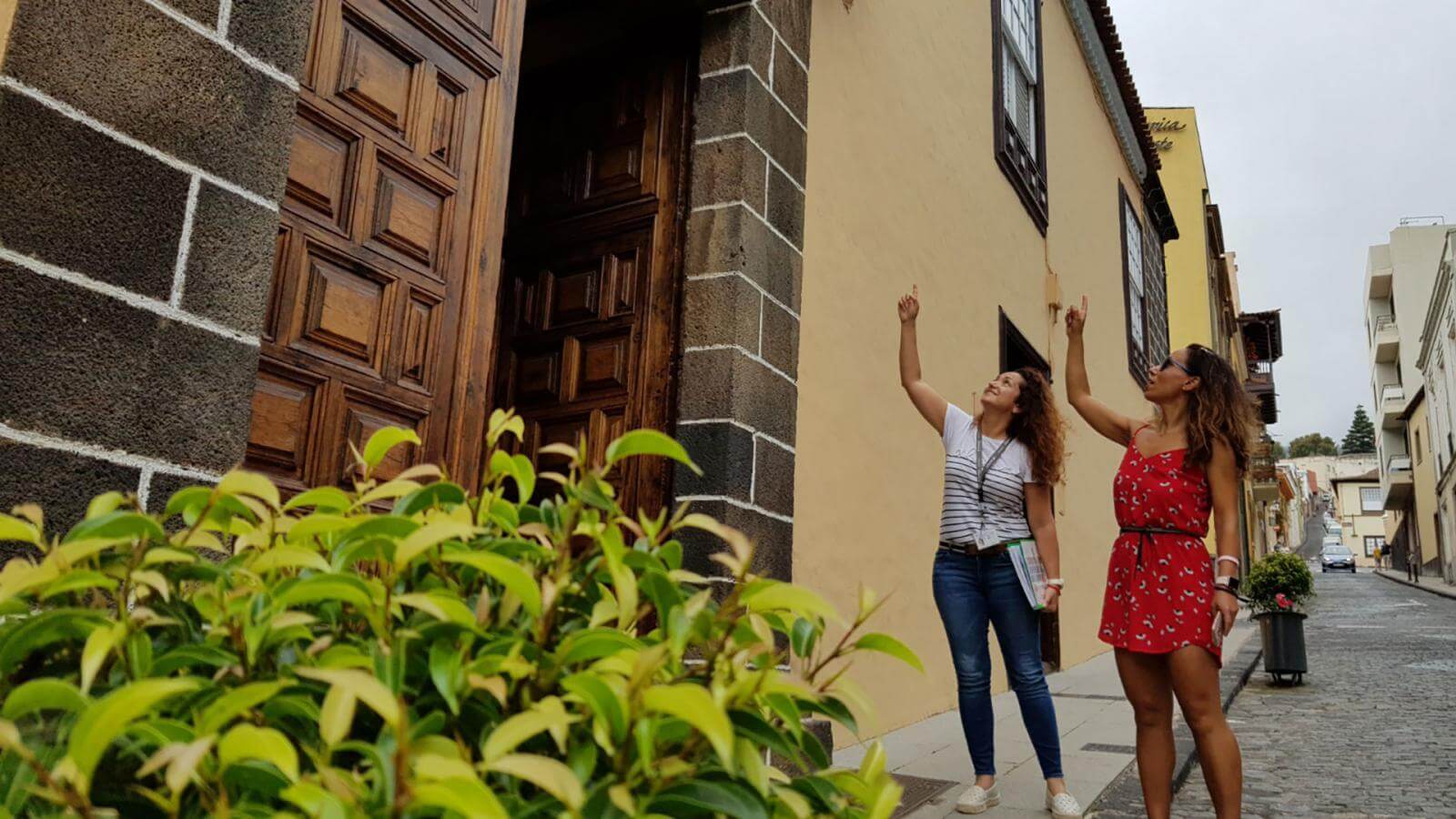
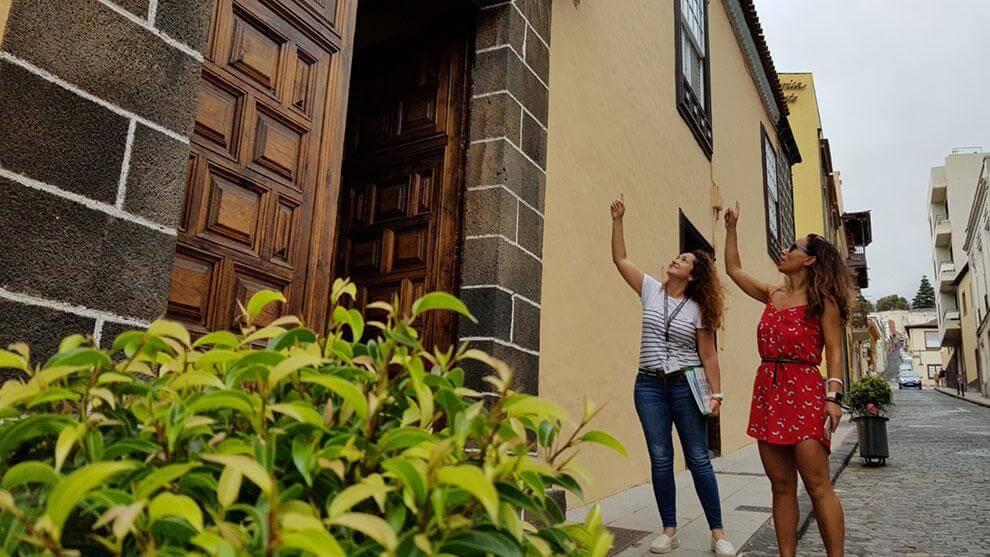
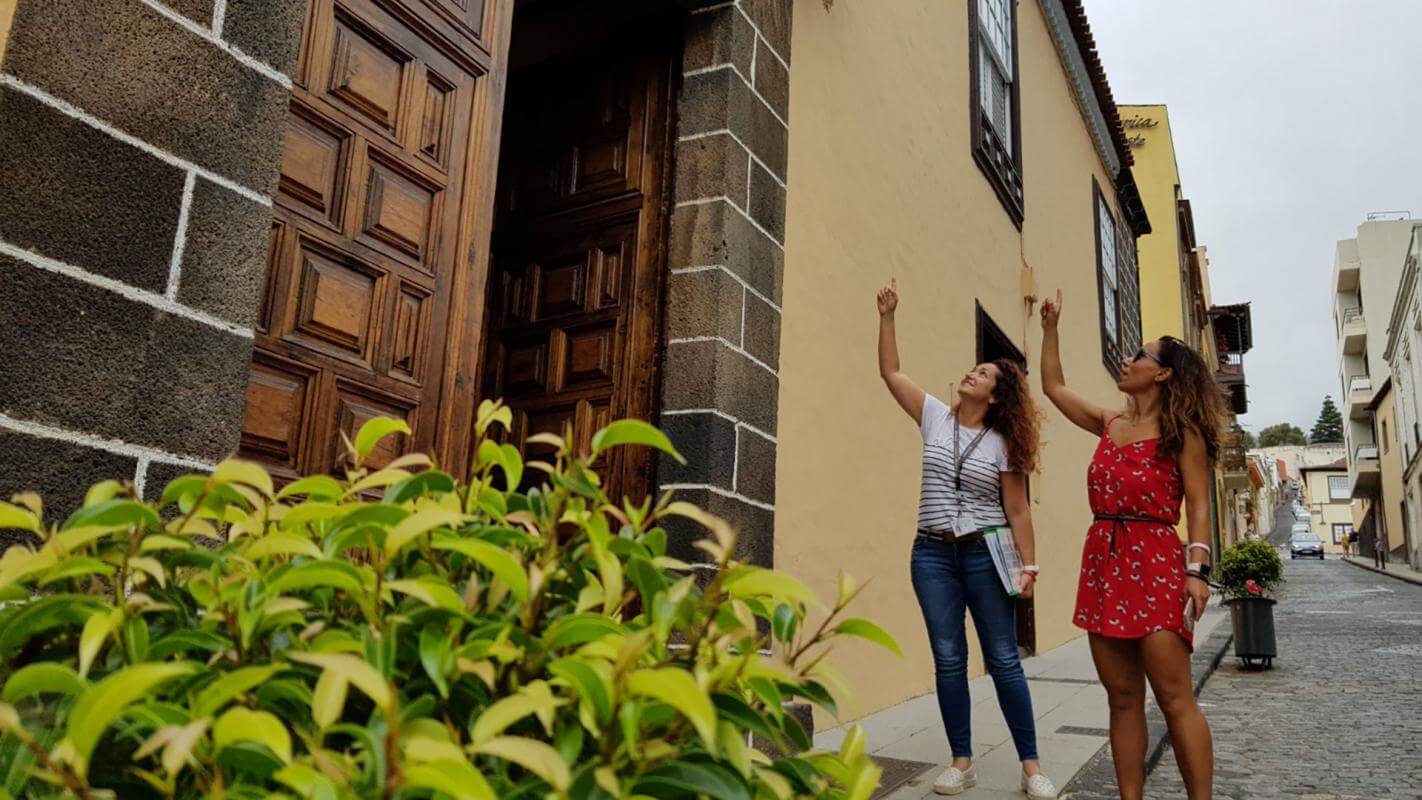
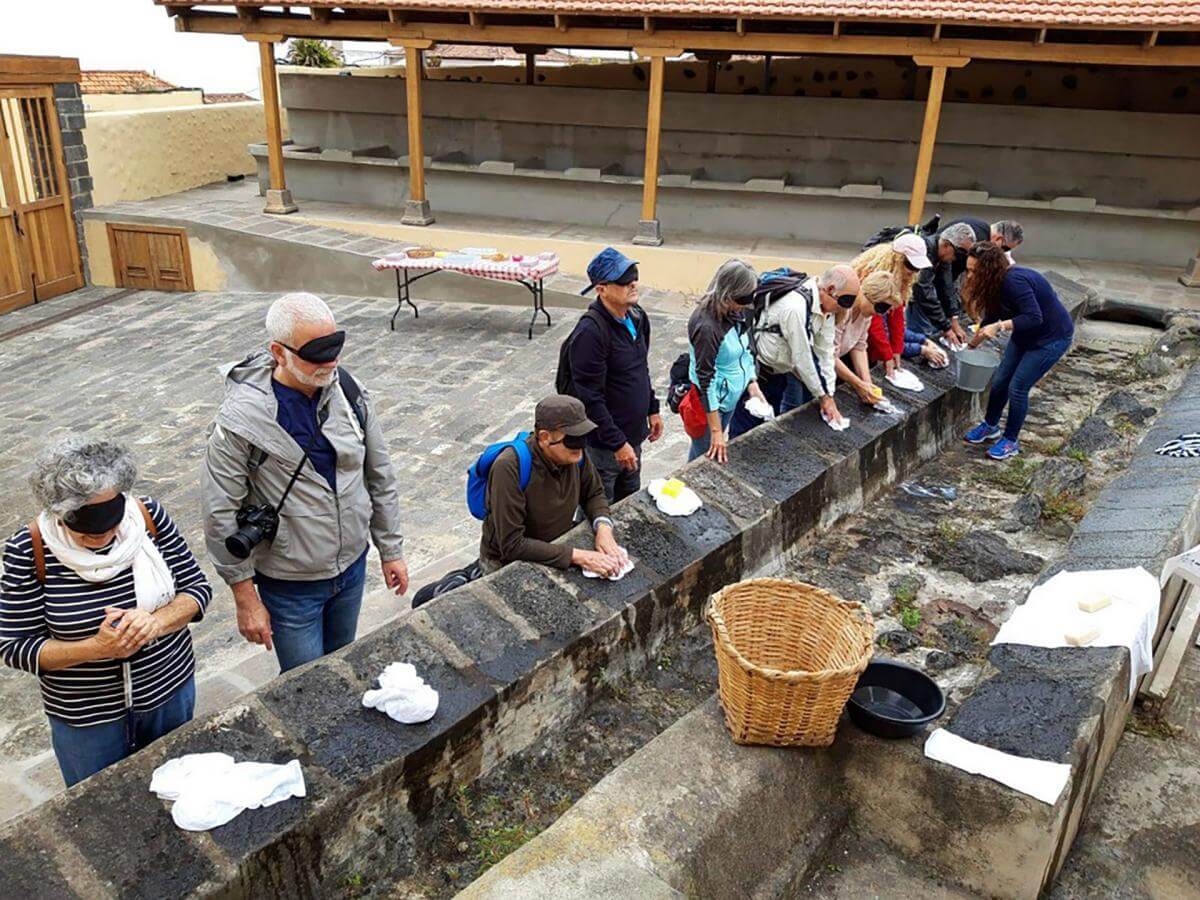
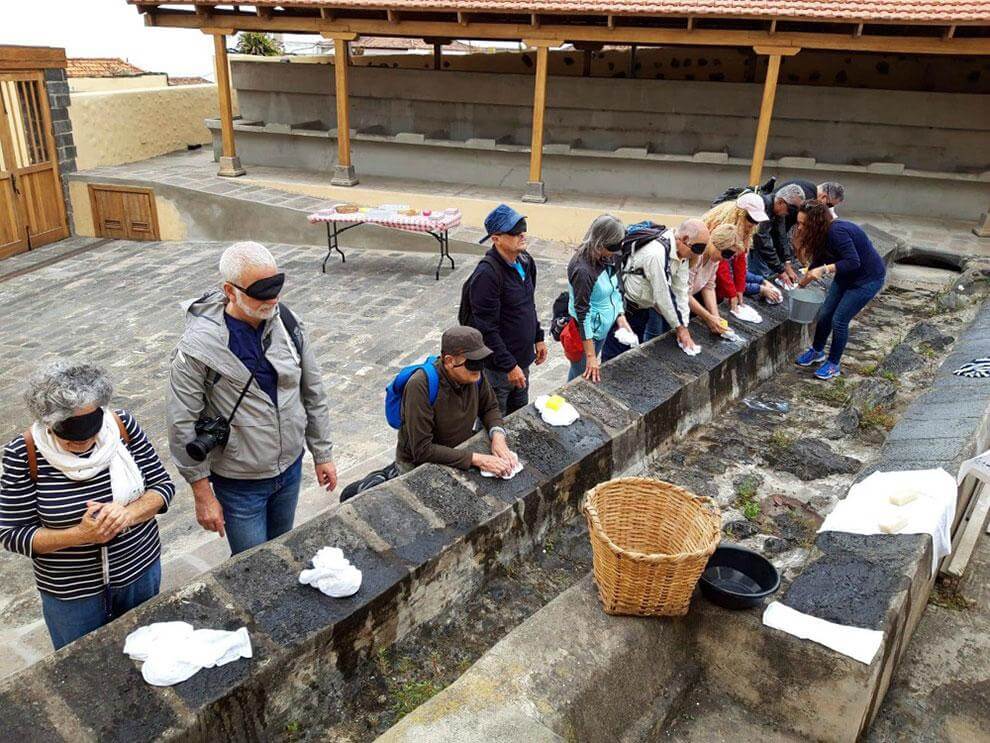
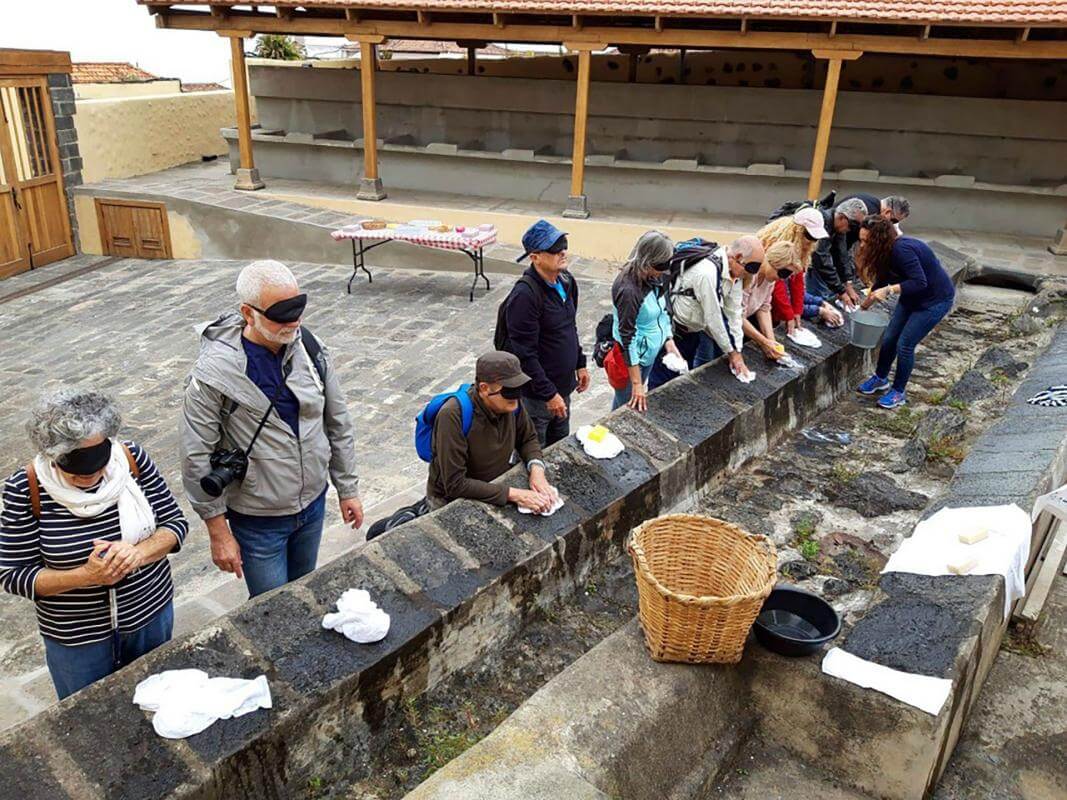
The culture of Villa Arriba and Villa Abajo
The rich traditions of La Orotava also broadens the horizons of those that work in film. The town has been the venue for the Villa de La Orotava Short Film Festival for 14 years. The director of the festival, Enrique Rodríguez, decided to create the event, he says, "to gather filmmakers from all over the world so that for twenty days once a year they can learn about the beauty and rhythm of La Orotava, a place full of authentic life."
After living in Villa Arriba and then moving with his family to Villa Abajo, Rodríguez admits to carrying the hilly terrain of Villa Arriba "in his veins, as well as in his legs". It is walking Rodríguez says that allows us to enjoy the perspective that every filmmaker longs for. “Colours change with the mist as the trade wind pulls in. Days are truly lived; they are never the same,” he says.
Slow life in La Orotava isn’t just about living without a clock, without rushing about. The slow life is about having time to greet a friend in the street. It is about pausing in the shade to watch a neighbour watering plants on her balcony. It is about observing the light as it filters through the clouds after a rainy morning. It is about closing your eyes and listening to the water as it passes along a stream. It is about strolling to the mill to buy a kilo of gofio. It is about sitting down to watch a film without worrying about its length and when it will end. The slow life is about sauntering through the Hujuela botanical gardens with the painter Imeldo Pérez García and listening as he talks.
“Be with the landscape and the vegetation. Remove your shell and be a snail. Discover the pleasure of truly living,” he says.
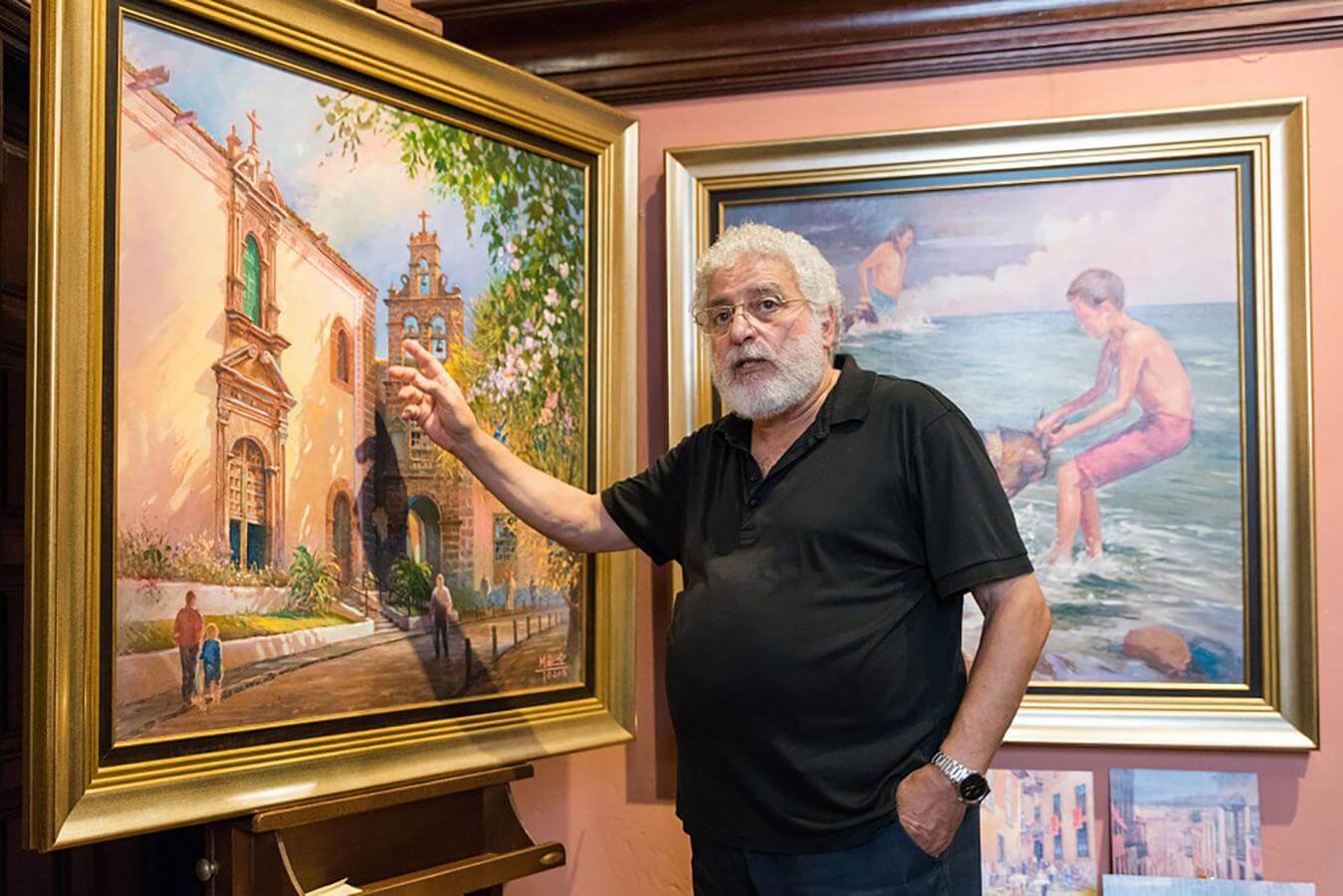
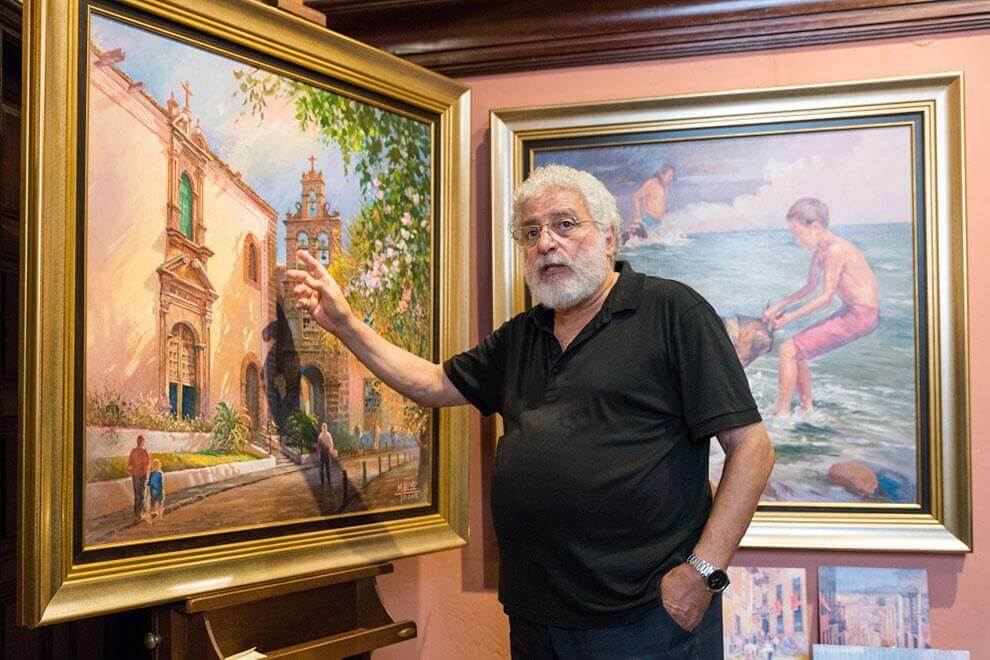
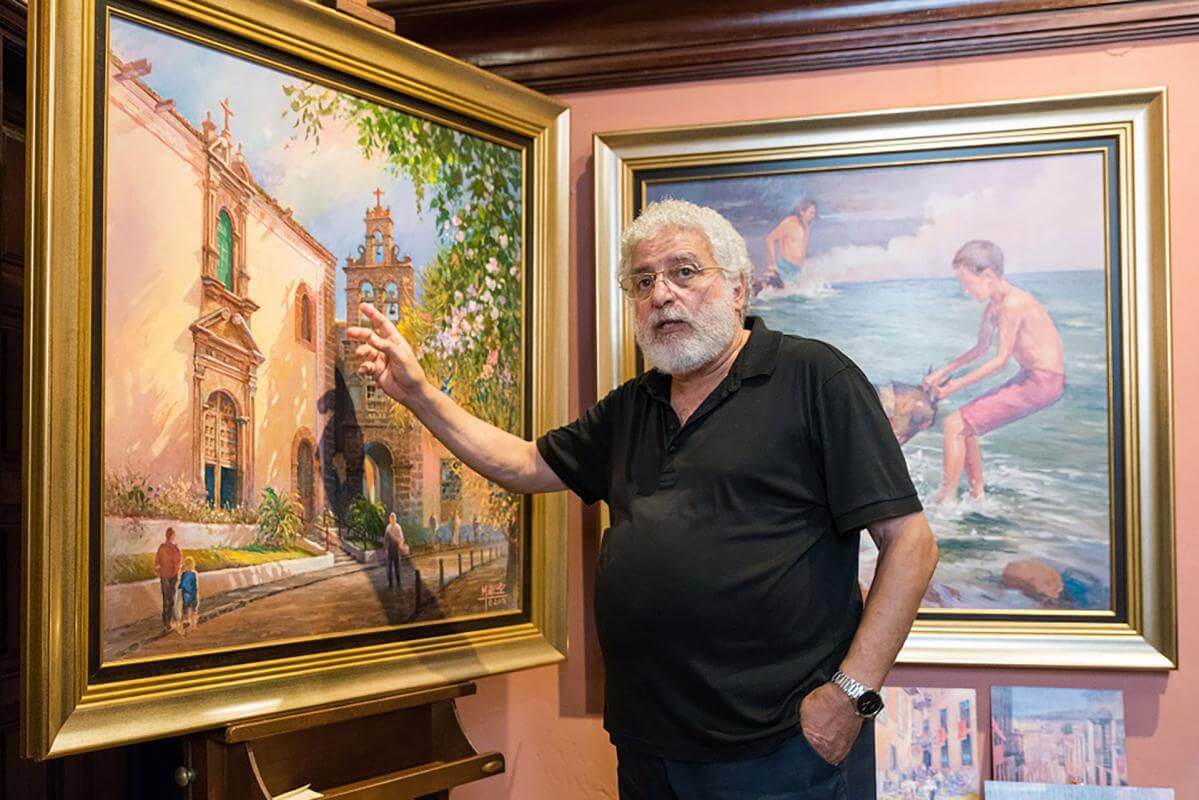
Other essential destinations: the slow life of the Canary Islands
The Canary Islands is lucky to possess a great number of small places, places far away from the din of the city. These towns and hamlets often have a charm which is absolutely unpretentious. They tell a story about the benefits of a simple life, the importance of being true to yourself and not worrying about time.
La Graciosa is closer to heaven than earth. The smell of frying fish is in the air. The golden sand is soft. It invites you to take off your shoes. Fishermen are fixing their nets on the shore. The eighth island of the Canary Islands is a quiet spot to unwind.
In days gone by there would have been the sound of canons firing in the distance. Pirates would scurry along the cobbled street as they sought to hide themselves from the law who had taken up the chase on horseback. Teguise is a very tranquil place nowadays, but if you look hard enough there is history all around this old sea port. La Villa de Teguise was the old capital of Lanzarote from the first half of the 15th century until 1852. To this day the town retains an aspect of grandeur with an impressive market which sells all types of goods.
Due to the forbidding terrain, until only a few decades ago access to La Aldea de San Nicolás was only possible on the back of a camel. Today the town maintains much of the allure of an island hideaway. The streets are narrow and cosy and the brightly coloured shutters of the houses are uplifting. There are laurel trees and palms, and there is an atmosphere of conviviality amongst the locals.
El Paso is located in the heart of La Palma and is famous for the mountain which sits alongside it. The town is quiet; the ragged terrain of the Caldera de Taburiente National Park which surrounds El Paso has been very good at protecting the local way of life. Cows pasture in meadows, goats gaze fixedly at the horizon, rabbits bob about and the bells of the local church (la iglesia Nuestra Señora de Bonanza) toll. The centre of El Paso has been pedestrianized, so the air is clean and locals have space to wander around, peek into the shops, buy a newspaper or magazine and chat.
The landscape of Hermigua, on the island of La Gomera, is unusual. At the highest point the peaks of the Garajonay National Park rise up into the sky. Lower down laurel forests make the slopes of the mountains shine green. Below that groups of banana trees vie for space as they creep towards the Atlantic Ocean which in all its wondrousness and strength stretches out into the horizon. Hermigua is for those who want to disconnect, remove worries and take back a simple life.
Echedo, in El Hierro, is blessed with very fertile orchards which at the right time of the year blossom in the tenderest of colours. This is particularly special because of the contrasts it allows with the black volcanic tone of the land. Unlike many places in the world, Echedo is still very much in touch with the seasons and the old agricultural way of life. Houses are made out of stone in a style particular to the local area. They evoke a homespun charm which soothes those that happen upon them.
